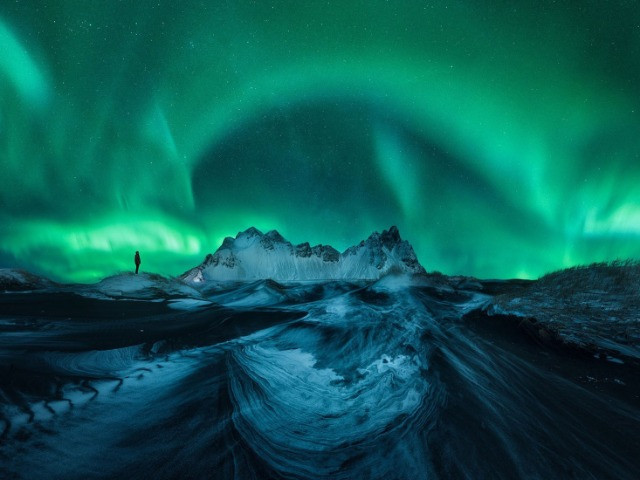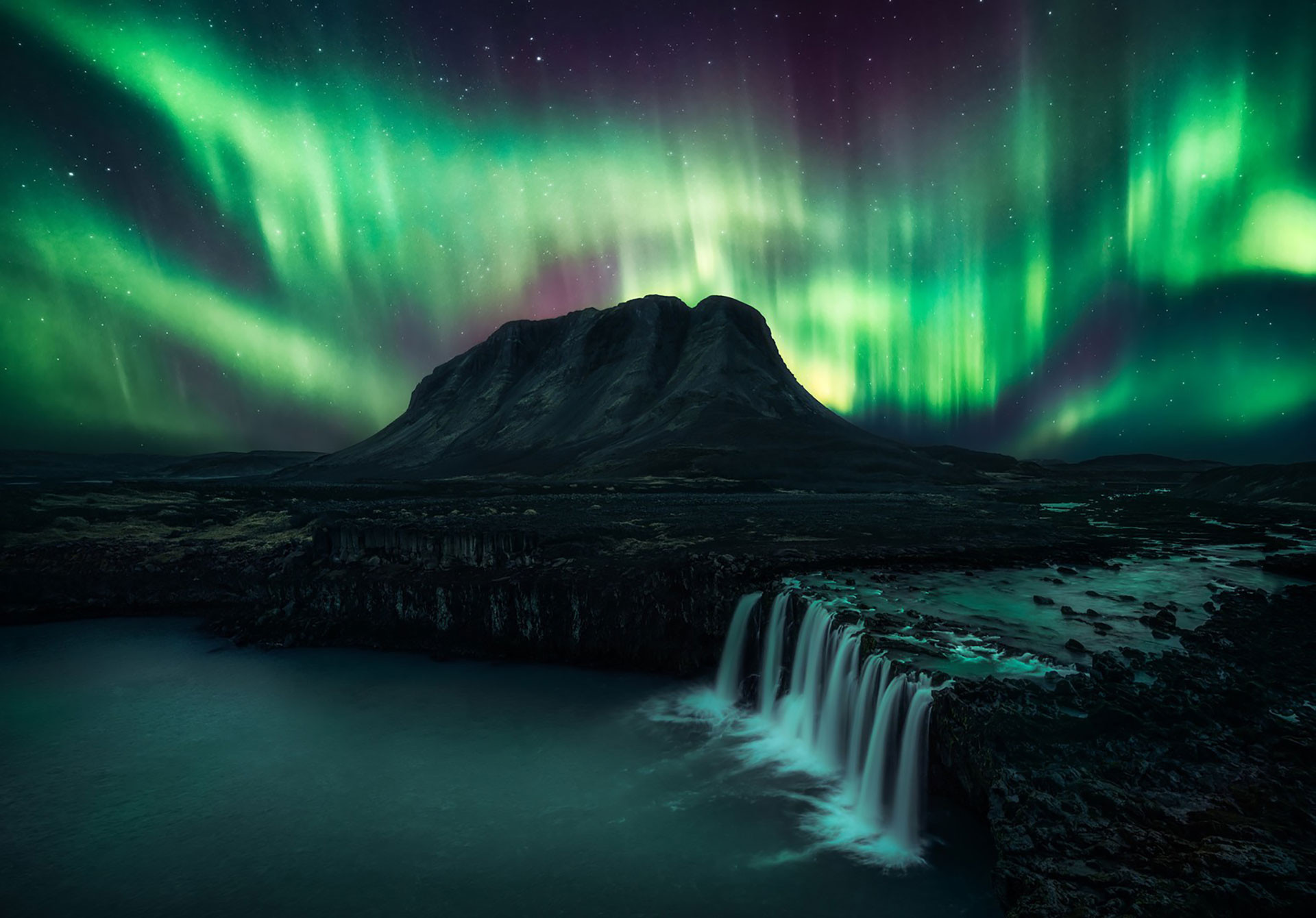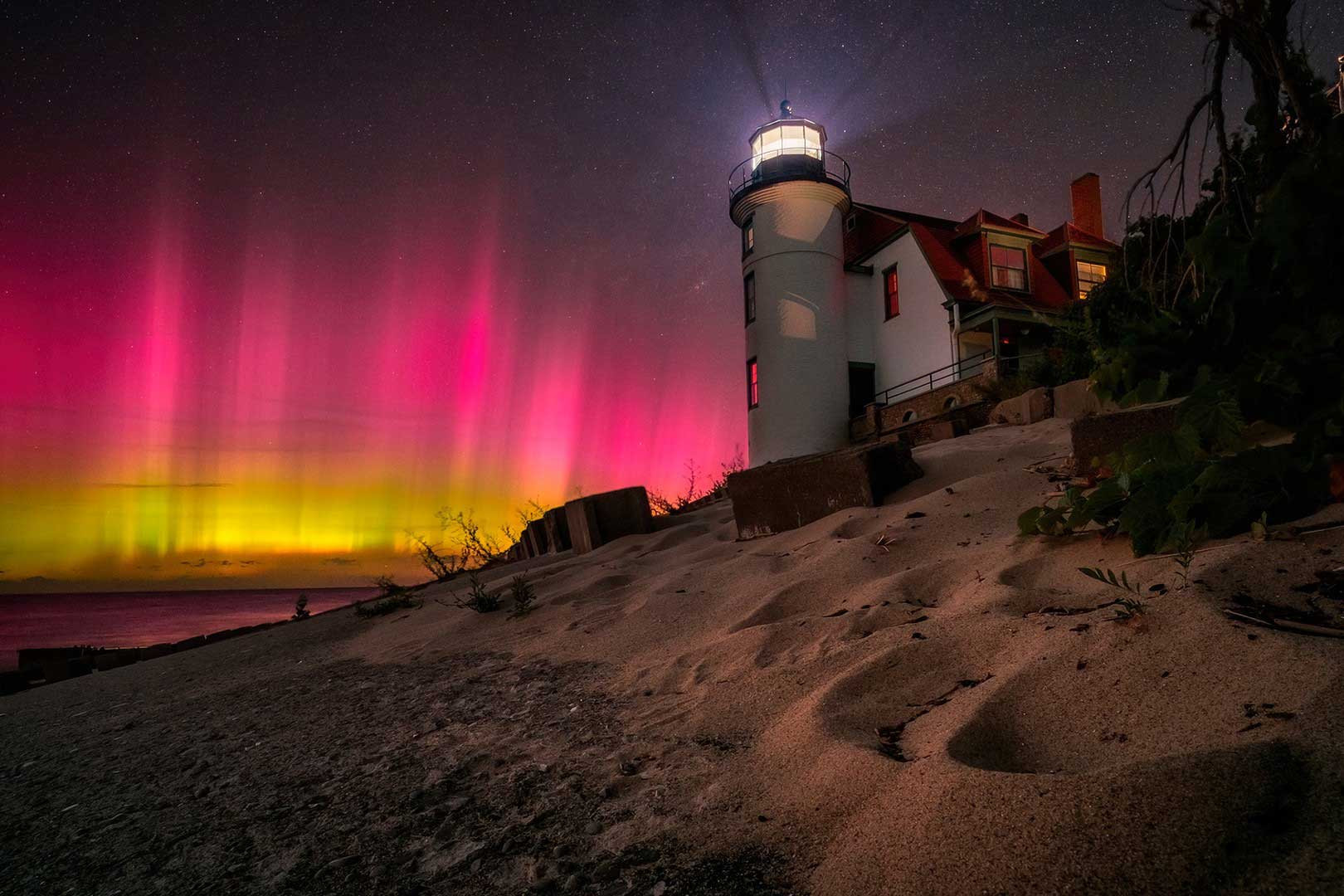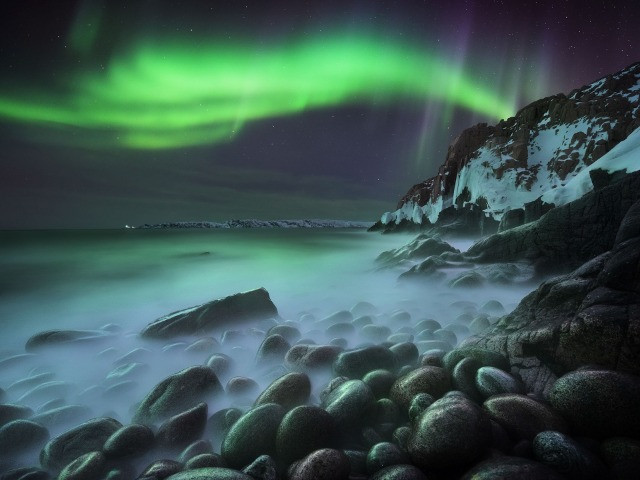The fifth edition of the Northern Lights Photographer of the Year has been published by Capture the Atlas. The collection features the 25 best photographs of the Northern Lights from around the world. This year’s edition includes images from countries like the United States, Canada, Finland, Norway, Denmark, Iceland, Russia, Greenland, and New Zealand, by 25 photographers from 13 different nationalities.
"The lifting of travel restrictions and the increase in solar activity with the new solar cycle are providing great opportunities to see dazzling Aurora shows. After two difficult years, we are seeing again a growing number of exceptional Northern Lights images, making it the most difficult selection of this collection to date," said Dan Zafra, the Editor-in-Chief of Capture the Atlas.
The 2022 edition features unique images like the Northern Lights captured in a glacier cave that recently collapsed in Alaska and in rare locations across Denmark and Michigan. Scroll down to see some of the best images from the 2022 Northern Lights Photographer of the Year.
The Light Upon Kerlaugar—Jannes Krause
Suðurland, Iceland
I was lucky enough to witness a fantastic KP 8 display on my trip to Iceland back in October. Not only that, but it was also my first time experiencing and photographing the Northern Lights. Originally my flight back home was scheduled to depart about 12 hours before this intense solar storm, but as soon as I saw the perfect weather and Aurora projections, I knew that I just had to change my plans and extend my trip by an additional day. Things finally came together, and I couldn’t be more pleased with the images I got.
An Explosion of Colour—Vincent Beudez
Tromsø, Norway
On this night, the Aurora forecast was very promising, but I was not expecting anything like this. It was cloudy all over Senja, where I was staying, so I had to drive a few hours to escape the clouds. It was a really beautiful night, and I saw some “coronas” and Northern Lights to the south. However, what happened at 3AM was totally unexpected. A huge red Aurora traveled across the southern sky (visible with the naked eye), while a spectacular Aurora exploded just above my head. This was by far the most colourful night I’ve ever witnessed up there, and it was a rare event that I’m very grateful to have been able to see.
Michigan Night Watch—Marybeth Kiczenski
Point Betsie Lighthouse, Frankfort, Michigan
Lady Aurora waits for no photographer or schedule. However, when I returned from Canada to Chicago, I was greeted by an Aurora forecast that was slated to be quite good (G1/G2 with a slight possibility of G3 conditions). I decided to choose Point Betsie as my main location for this Aurora chase. We were greeted with quite heavy winds but a beautiful sunset and warm weather. Around 11:30pm, she made herself known. We cheered. We clapped. This is what makes all of it worth it!
Red Skies—Ruslan Merzlyakov
Nykøbing Mors, Denmark
Absolutely insane red pillars of the Aurora showed up above Limfjord, just a three minute drive from my house. Many think that Denmark, being placed far away from the general Northern Lights activity, is not an ideal place to see the Aurora. This might be true, but there is always hope for magic during the darkest months of the year. I have been photographing the night sky for more than ten years, and I always try to inspire people to go outside to experience our wonderful night skies and explore the unknown.
Inception—Giulio Cobianchi
Lofoten Islands, Norway
I decided to spend that night up in the mountains with one of the most beautiful views of the Lofoten Islands. My goal was to photograph a “double Aurora and Milky Way arc”, to add to my Aurora collection. It wasn’t completely dark yet when I began to see the faint Milky Way in front of me. I hoped that in the next hour, a faint Aurora would appear on the opposite side, creating an arc that would fit perfectly into the composition, and so it was! What a night! Under the Milky Way, you can see the Andromeda Galaxy in the middle of the two arcs. A shooting star acts as the cherry on top, and above a colourful Aurora, there is one of the most beautiful constellations, the Big Dipper! To the north, you can still see the light of the sun, which had recently gone below the horizon.
Auroraverse—Tor-Ivar Næss
Nordreisa, Norway
When the Northern Lights go crazy in the night sky, focusing on your composition is worth the utmost effort because there is so much happening so quickly. Even for a seasoned photographer, it’s very hard to focus on enjoying the Aurora while photographing it.
You may also like to read
Polaris Dream—Nico Rinaldi
Murmansk Oblast, Russia
I had dreamed about photographing the landscapes of Northern Russia for a long time, and this year it came true! There, you feel like you are in the realm of snow monsters, in a landscape where the mountains and trees are dominated by ice and snow. That night, the Northern Lights put on an incredible show! It was hard work to get to this place, since exploring this location and organising logistics required a lot of time, effort, and the help of the friendly locals we found in our path. I only hope we can see the peace reestablished soon and re-connect with so many incredible people and landscapes on this planet.
Towering Ice—Virgil Reglioni
Scoresby Sund, East Greenland
At high latitudes such as 71° North on the eastern side of Greenland, the Aurora oval varies and slightly leans down. The Aurora is stronger here than at more southern latitudes due to the tilt of the magnetic north. That night, the Aurora forecast predicted a KP 2 to 3, and with those conditions, it would have been easy to see the lights when looking north; however, we were facing southeast. I photographed this image from an icebreaker, meaning that the exposure time had to be quite short to avoid movement from the drifting and rocking vessel. The Aurora exploded above our heads, which also required a faster shutter speed, allowing me to freeze its movement. Additionally, that night the full moon was shining light into the fjord, which was filled with giant icebergs.
Under a Northern Sky—Rachel Jones Ross
Tombstone Mountain Range, Yukon Territory, Canada
The northern sky is utterly fascinating. We have all heard stories about the Land of the Midnight Sun: in the summer, the sun doesn’t really set, and in the winter, nights are long with no sun, or very little sun at all. But there are also 3-4 days each month when the moon doesn’t set (circumpolar) and 3-4 days each month when it doesn’t rise! Before I left, I checked the moon calendar, and I was a bit disappointed to see that my visit would coincide with a waxing gibbous approaching a full moon. But on closer investigation, there were four nights when the moon didn’t make it above the horizon, and I had dark nights for shooting the Aurora!
Spirits of Winter—Unai Larraya
Riisitunturi National Park, Finnish Lapland
This year, I took a trip to the Finnish Lapland with the goal of capturing the elusive Northern Lights. However, the first few days in Kuusamo, where I stayed, were a bit disappointing due to the terrible weather conditions. Day 3 looked promising with a KP6 and clear skies for the whole night. After being out all night, we didn’t see a single light, which was unusual. The next day, we wanted to photograph the Northern Lights so badly that even with an unpromising forecast and temperatures of -30ºC, we decided to give it a try. Finally, the magic happened, and I was able to photograph the Aurora Borealis!
Nugget Point Lighthouse Aurora—Douglas Thorne
Nugget Point Lighthouse, New Zealand
Nugget Point Lighthouse is on the eastern side of New Zealand’s South Island. It rests above the famous rocks, which were named by Captain Cook because they looked like pieces of gold. I arrived here early one autumn morning to capture the Milky Way rising above the lighthouse. However, I was greeted by a surprise visitor. The Aurora Australis began to glow, its beams blooming over the ocean. I quickly changed my approach and got excited as flashes of yellow and red began to appear in my frame. Eventually, the Milky Way and the Aurora began to synchronise harmoniously, resulting in this image. It reminds me that sometimes the best shots happen unexpectedly. You have to take risks and go exploring because you just never know what you might come across.
Chasing the Light—David Erichsen
Castner Glacier, Alaska, USA
As a kid, chasing the Northern Lights had always been a mystical dream. Even though I’ve been lucky enough to witness quite a few shows over the last few years, it never gets old. What’s not pictured in this shot are the several nights I wandered out to this cave in sub-zero temperatures waiting for just a hint of green to dance through this frozen window. After repeatedly striking out, I finally got another opportunity on a night following a huge G2 with clear skies. I knew the recent CME (coronal mass ejection) might be strong enough to make this two hour midnight hike worth the journey. As I made my way out to the cave, my walk quickly became a full-on run as I saw the sky split open with magnificent colour. Sadly, the ice cave collapsed on itself a couple months ago, which just shows that you have to chase every opportunity before it’s gone.















